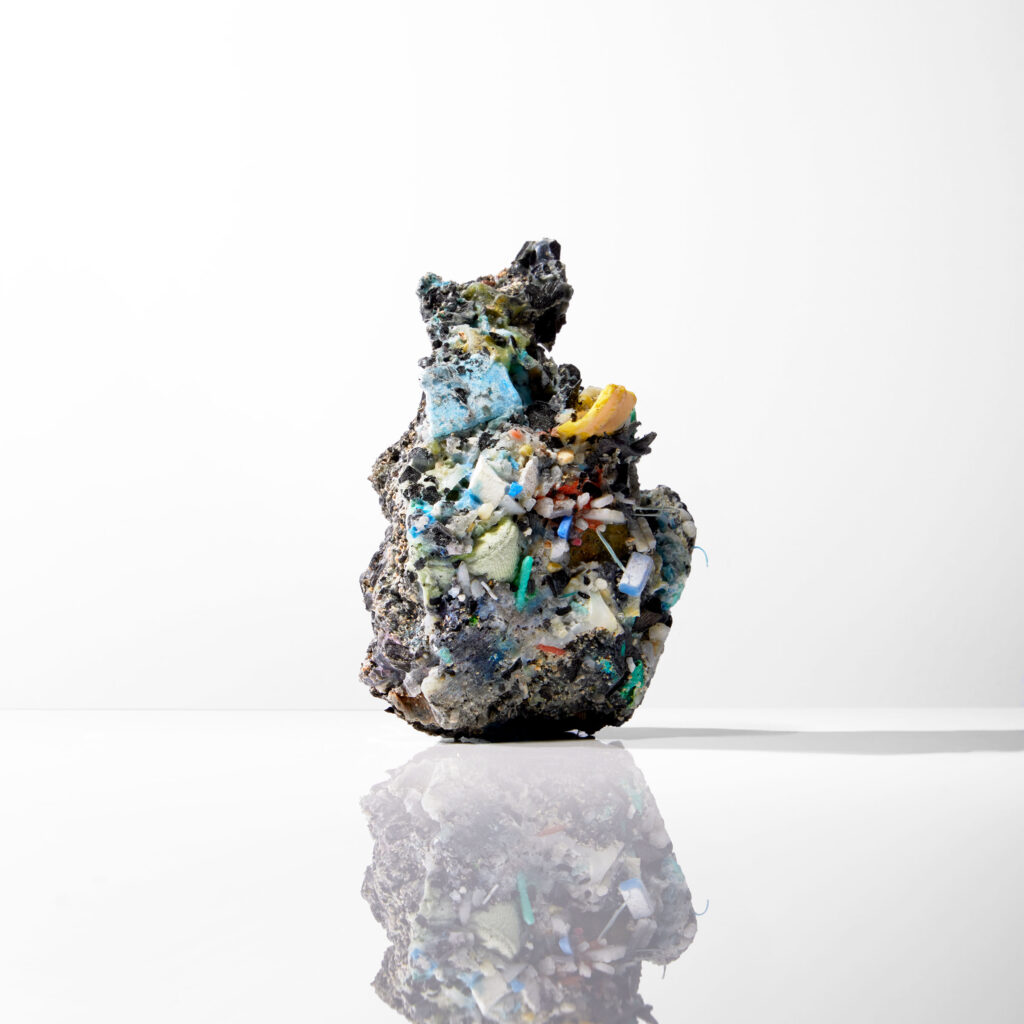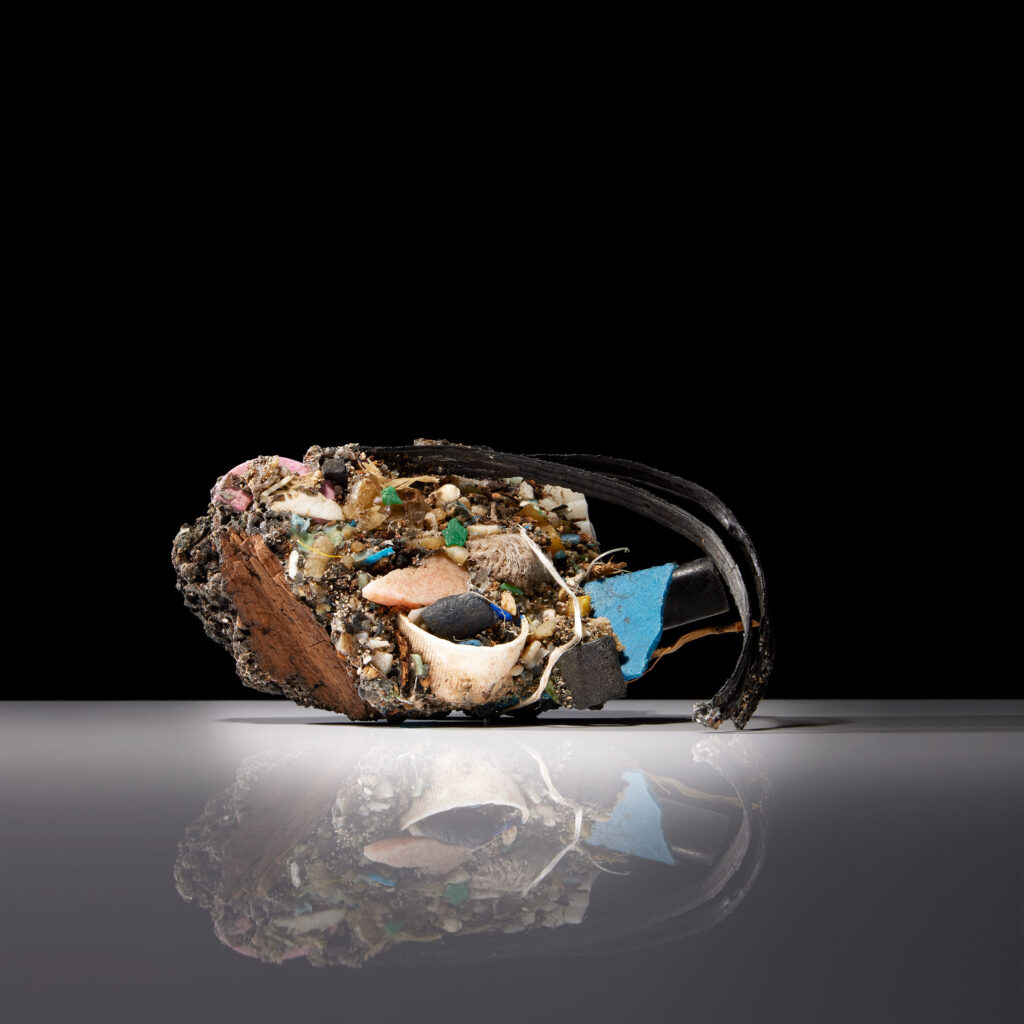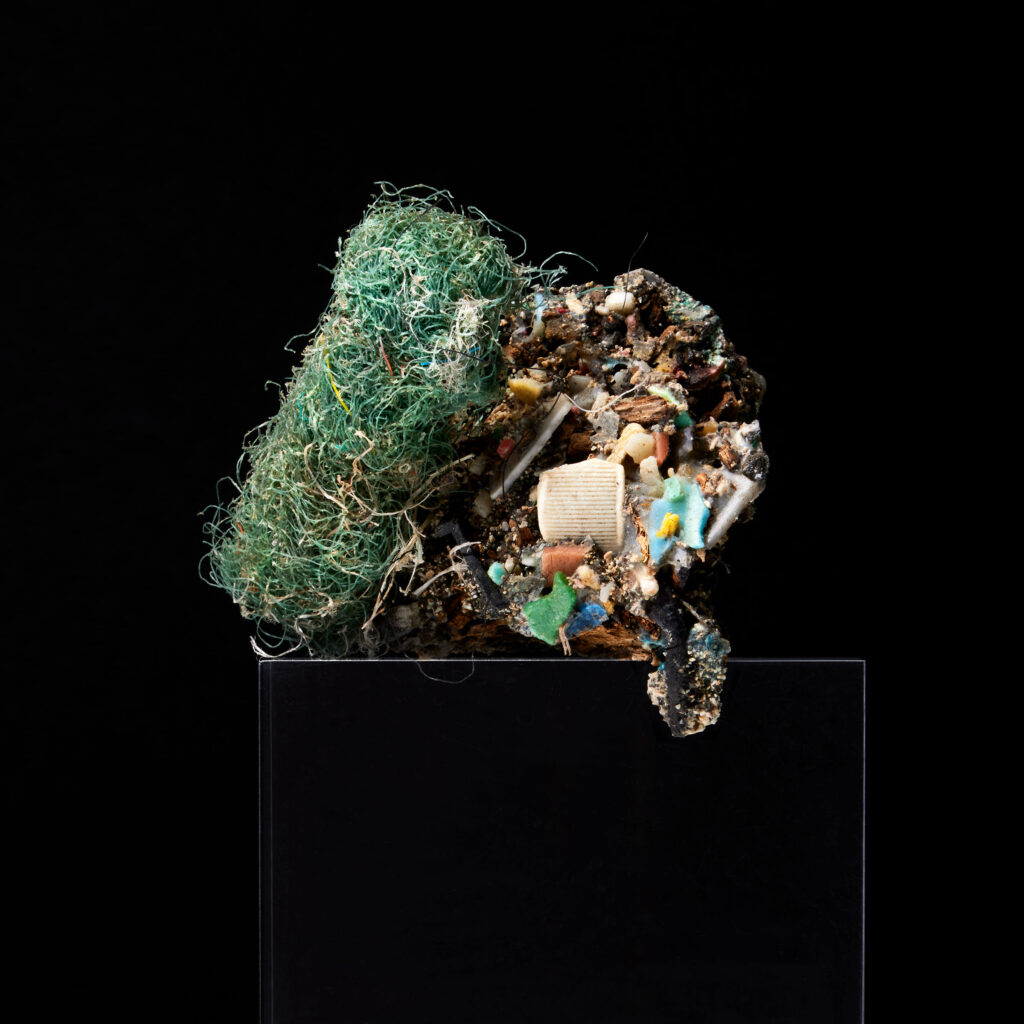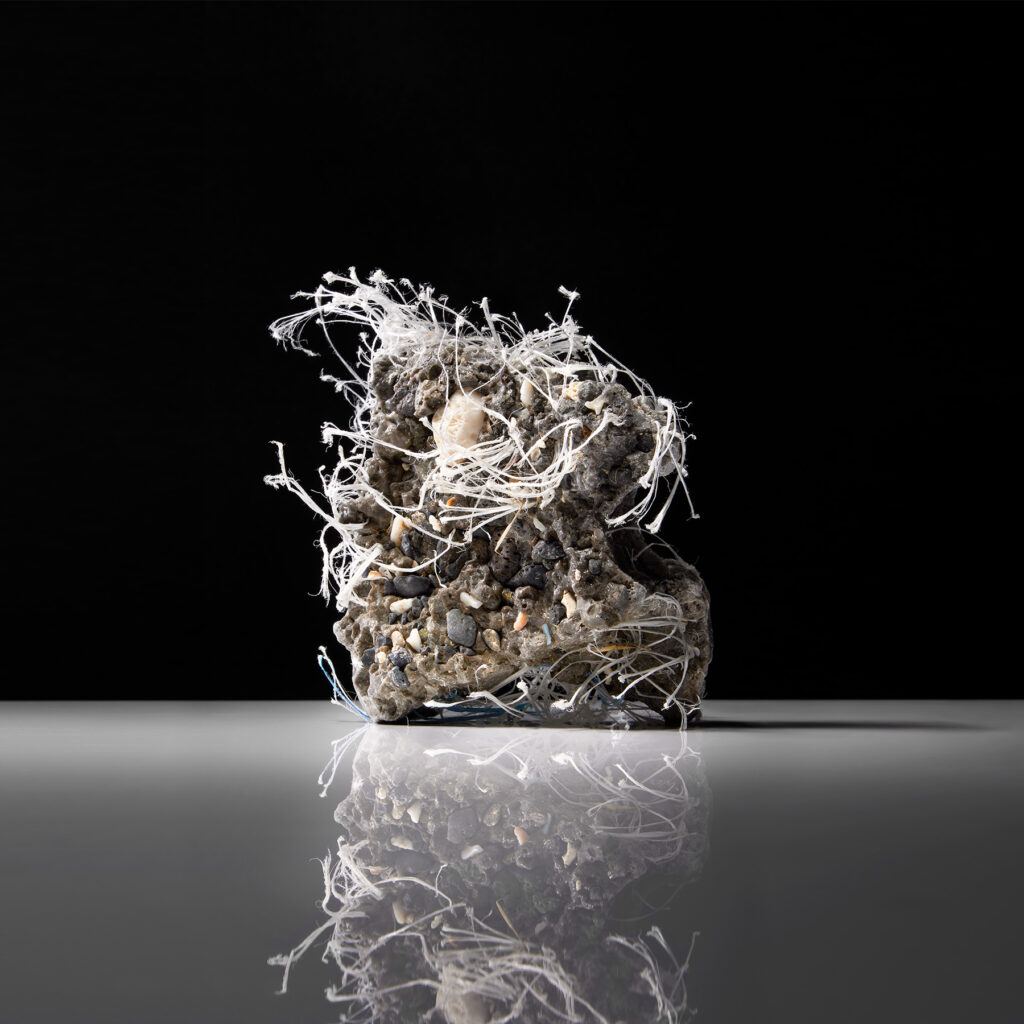Single-use plastics are bad.
Plastic straws.
Plastic grocery bags.
Plastic cutlery.
Bad.
Bad.
Bad.
All three items, along with plastic takeout containers, stir sticks and six-pack rings, were banned by the federal government in 2023 for good reason (though a recent court ruling has opened the door to their reintroduction). They’re all devastating for the environment, oceans, wildlife and let’s just say it, the very survival of the human race.
That’s single-use plastics—the low‑hanging fruit of plastic products. But there are thousands, if not millions, of uses for plastic that we can’t so easily do without. Automotive parts, cladding (coating/insulation for wiring), even sewer pipes are all made of plastic. Outlaw any of these precious plastics and transportation would grind to a halt, smartphones would be illegal, and let’s not even think about what would happen to our sewage systems.
So, for a minute, let’s dedicate a few (hundred) words to the positives of plastic. And why it’s so hard to walk away from them.
Elizabeth Gillies, Western chemistry professor and Canada Research Chair in polymeric biomaterials, understands the impasse. Since grad school she has been working with polymers (large molecules formed by linking up smaller repeating chemical units—used in everything from plastic water bottles to clothing and automobiles). Today, she spends a lot of time developing alternatives to conventional plastics. But she says for some things, you just can’t beat plastics. Yet.
“Yes, there are some alternatives now, but at the time plastics were developed, they were seen as replacements for materials like metal and glass,” says Gillies. “Plastics have great properties compared to those materials for many applications. They are lighter than metal, which make them much easier to transport, which uses less fuel, and they’re less breakable than glass.”
Joshua Pearce agrees. The John M. Thompson Chair in Information Technology and Innovation at the Thompson Centre for Engineering Leadership & Innovation at Western, Pearce has designed and delivered countless 3D-printed products (everything from operating beds to solar panel mounts) using plastic filament as a key component. And they’re all open source, meaning the designs are free to use, modify, improve and even profit from.
“Our lives would be materially less pleasant without plastics. That’s the good side,” says Pearce, who holds appointments at Western Engineering and Ivey Business School. “Unfortunately, plastics also threaten our environment and our health. They’re also very difficult to recycle economically because a lot of it is low density, meaning it can only be recycled a few times before losing its strength. That’s why we have the problem we have now. And it’s a big problem.”

Cucumber conundrum
A classic example of conceivably pointless—even preventable—plastic usage is food wrapping, like the sleeve enveloping nearly every English cucumber sold in Canada. “So many people, me included, get upset about why anyone wraps a cucumber, but I learned a cucumber actually lasts 10 days longer in plastic,” says Patricia Corcoran, Earth Sciences professor at Western and expert in sedimentary petrology, or more simply, the study of sedimentary grains (whether natural or plastic). “Food waste takes a huge toll on the environment and food security; so yes, prolonging shelf life is valuable. But it’s another deal with the devil. Another trade-off with plastic.”
In 2012, Corcoran coined the term plastiglomerate after witnessing a pervasive phenomenon at Kamilo Beach on the island of Hawaii with Montreal-based artist Kelly Jazvac, who at the time was a visual arts professor at Western. They described their discovery of a new “stone formed through the intermingling of melted plastic, beach sediment, basaltic lava fragments and organic debris” in a landmark 2014 study, co-authored by oceanographer and sea captain Charles Moore.
This ‘intermingling’ or entanglement is Corcoran’s primary concern: the relationship between rock and plastic has become symbiotic, even parasitic, with one now fused to the other, unable to breathe without its partner. And it’s not just rocks. Intermingling, most perilously through ingestion, happens with fish, turtles, birds, kelp and algae too. “We always see news coverage of plastic ingestion and entanglement when it comes to marine life, plant or animal, but that’s mostly larger items,” says Corcoran. “The dangers of large debris get all the press because it’s visual. But the smaller plastic, the microplastics, are far more dangerous.”
Microplastics come from a variety of sources, including larger plastic pieces that have broken apart, resin pellets used for plastic manufacturing, or in the form of microbeads, which are small, manufactured plastic beads used in products like facial scrubs and body wash. “It’s been shown that plastics travel up the food chain and humans are at the top of it,” says Corcoran. “So, while industry may not care about what’s ending up in our air, lakes and oceans, people will care when microplastics start showing up in our stool samples. In fact, it already has and that’s pretty scary.”
Corcoran and her team are investigating microplastic pollution in the Great Lakes watershed by analyzing sediment, soils, air, water and fish samples, as well as surveying shorelines. The wicked problem is that microplastics are abundant, but equally disturbing is that it is no longer only factory drainage, spills and runoff driving the spread of these tiny killers. The breakdown of plastics is happening naturally through wind, waves, currents and simple human motion. Stopping the spread of microplastics is a huge challenge because the proverbial genie is already out of the bottle. And the bottle’s made of plastic, too.

(Ele)mental health
Plastic pollution isn’t just a water problem. Earth and air can be affected too, especially when the fourth element, fire, joins the fray.
Just last year, a freight train carrying nearly 400,000 litres of hazardous chemicals derailed and burned in East Palestine, Ohio. Much of the train’s freight was polyvinyl chloride (PVC), which is used to make plastics for a wide range of household and industrial products, from raincoats and shower curtains to flooring and indoor plumbing. While the chemical analysis assessment of the Ohio train disaster is ongoing, recent results show there was no danger to the community. However, many scientists including Gillies, say it may be too early to make that judgement and the long-term impact still needs to be investigated. “Plastics are generally made from petrochemicals, the chemical byproducts of petroleum refining, and the whole process of generating monomers and the chemical manufacturing of plastics in general, isn’t great for the environment,” says Gillies.
“Vinyl chloride, which is a monomer, is incredibly toxic. It’s so pervasive worldwide, it’s going to be very difficult to turn back the clock. But we need to find something fast before it’s too late.” To that end, Gillies and her collaborators, including Western Engineering professor Aaron Price, worked with industry partner CTK Bio Canada to develop a new biodegradable, hemp-based material that could serve as a sustainable substitute for plastic.
Hemp is an agricultural crop that requires minimal resources to grow. It’s also a waste product of Canada’s ever-growing cannabis industry, making it a free resource that would otherwise be destined for a compost heap or landfill. Using hemp as a filler would allow for far less actual plastic ending up in products. This would also make composting plastic, or at least parts of it, a possibility. “Depending on the form, hemp can have a fibrous structure, which acts perfectly as a reinforcement for materials,” says Gillies. “Basically, hemp can make materials stronger than many other biomaterials.”
The goal of the project with CTK Bio was to find a proxy for widely used industrial plastics such as high-density polyethylene pellets, which could be fed directly into the same manufacturing process currently used to produce plastic packaging. Gillies and her collaborators used ground hemp stalk powder as filler during packaging production. Although the new biomaterial may not perfectly mimic the strength and malleability of current packaging plastics, it does come close depending on the specific application. And it does exhibit degradability, which is key for sustainability.
While biomaterials are currently more expensive to produce than plastic, companies are working to optimize and reduce pricing, so costs are expected to fall in the coming years as technologies improve. “It seems obvious that an easy solution to all of this is to recycle more effectively, but we know that just doesn’t happen,” says Gillies. “The alternative is to create biodegradable plastics and use bio-based starting materials to eliminate the environmentally problematic components that go into making the plastics. This is a huge area of growth in polymer science right now.”
And while there may be some sustainable companies that see plastic as a moral, ethical and environmental concern when it comes to best business practices, don’t think that’s the only reason for the change of heart. For some in the plastics industry it’s simply about the almighty dollar. “Companies are actually starting to invest in this type of research and development,” says Gillies. “It’s a major challenge because you have to meet the cost and property requirements (of plastic), but I think companies do see this as a solution, especially for some areas where you really can’t even collect the polymers to recycle them.” Many jurisdictions, including Ontario, are trending towards implementing rules that will force manufacturers to take on the full costs of recycling their own products or even more radically, being held responsible for recouping their waste and dealing with it themselves.
Easy enough when it’s household appliances, automotive parts, TVs and computers, but what about microbeads, less than one millimetre in diameter, that are non-degradable, don’t dissolve in water and can be found in everything from soap to, sadly, sharks. “This is a rapidly growing area and there are lots of smart people working on it, so there is hope,” says Gillies. “Let’s start with doing a better job recycling but there is far more to do as a society, and it starts with plastic manufacturers.”
The onus, Corcoran says, is on producers and distributors. “Producers need to stop making non-recyclable packaging just to make things look pretty or food more tempting,” she says. “And distributors, don’t use Styrofoam for packaging meats in your grocery store. I can’t believe some stores still do this.”

Recycle plastic, not ideas
As a society, despite more than 50 years of blue boxes and the synonymous symbol of three chasing arrows, we still don’t really recycle. At least not enough to make a dent. “Globally, historically, if you add up all the plastic we’ve ever made, we’ve only recycled nine per cent of it. And even then, most of what we recycle usually ends up back in the landfill anyway. It’s a disaster. And a failure,” says Pearce. “And the reason is poor economics.”
Unlike high-value materials like aluminum, recycling low-density plastic (the most common kind) usually costs more than it’s worth. So, public and private waste management sites end up having to spend extra money to recycle it, if it’s even recycled at all. “It’s embarrassing when you actually add up all the costs of plastic. We have a big challenge in that our economic system currently doesn’t include all the costs when it sets the price of plastic,” says Pearce. “Plastic is seemingly cheap and easy to shape into whatever you need it to be. But if you include all the costs—the cost of production, the cost of collection, the cost of recycling—it is no longer cheap. Until we include all the costs and all the benefits for every business decision we’re making, it’s all just a fairy tale so we can’t leverage the power of economics to help us make the right decisions.”
Pearce is a strong proponent for building a circular economy manufactured on the back of plastic. A circular economy is a model of production and consumption, which involves sharing, leasing, reusing, repairing, refurbishing and recycling existing materials and products as long as possible. In this way, the life cycle of products, like plastic, is extended. “A great example of building a circular economy is Precious Plastic, a non-profit group that started in Europe. They developed several open-source designs for different tools like shredders and recyclebots (waste plastic extruders). Their whole idea is that we should be treating plastic like a precious resource and recycle it locally for profit,” says Pearce.
Shredders cut plastic into small flakes that can be easily washed and run through a recyclebot, which heats and presses the flakes to create a line of plastic ‘spaghetti’ that can be 3D-printed into any shape. “If you have these tools (shredders, presses, recyclebots and 3D printers) available to you, at home or maybe in a community centre or a school, you can start to develop products of high value, like medical devices, scientific equipment, plastic lumber and even toys with recycled plastic,” says Pearce.
In Canada, despite our adherence to the metric system like most countries in the world (save the U.S., Liberia and Myanmar), imperial units are commonly used in our construction and trades. So, all those open-source designs created in Europe don’t work here, because the inner workings of complicated machines, especially those that chew up and spit out recycled plastic, can’t be reconfigured with simple measurement conversions. “There are no manufacturers of these designs in Canada, so now we’re working on a North American solution,” says Pearce.
Pearce and his Free Appropriate Sustainable Technology (FAST) lab collaborated with a research team led by Western alum Jennifer Ewans, BESc,’96, at Fanshawe College in London, Ont., who designed and developed a plastic shredder using imperial measurements. The shredder, now operational, is already recycling plastic bottles and Pearce and his team use the shredded materials in their open-source hot presses and recyclebots for use in their lab’s 3D printers. Then they make everything from auto injectors and assistive mobility aids like walkers to scientific tools for their own lab. “We’re going to have a Canadian version of this whole line of equipment, so every community has the option to recycle their own plastic waste,” says Pearce. “I’m confident we’ll get there. And when we do, it will be amazing.”

Can’t change without change
While Pearce and Gillies look for alternative and circular solutions, Corcoran continues to record the distribution, abundance and types of plastic contaminating our planet like an infectious disease. Or, more closely, a full-blown synthetic zombie apocalypse. She is often out sampling and studying the Great Lakes region in search of plastics big and small, but sometimes the plastic comes directly to her. “I just ordered a bunch of supplies from Amazon for sampling in the field. Things like cable cutters, wire scissors, a battery-powered screwdriver. When it arrived, everything was wrapped in plastic and none of it was recyclable. There was no resin identification code. Nothing. Everything just ended up in the trash. The simplest, most basic thing a company could do at this point is make sure the plastic they’re using for packaging is recyclable.”
But most companies aren’t doing it. And that’s the problem with plastic. Not unlike plastiglomerate, the planet and plastic have become too intermingled, and the result is a monster only Frankenstein could love. Science brought that creature to life and compassion and understanding saved it. Mary Shelley may have been on to something.